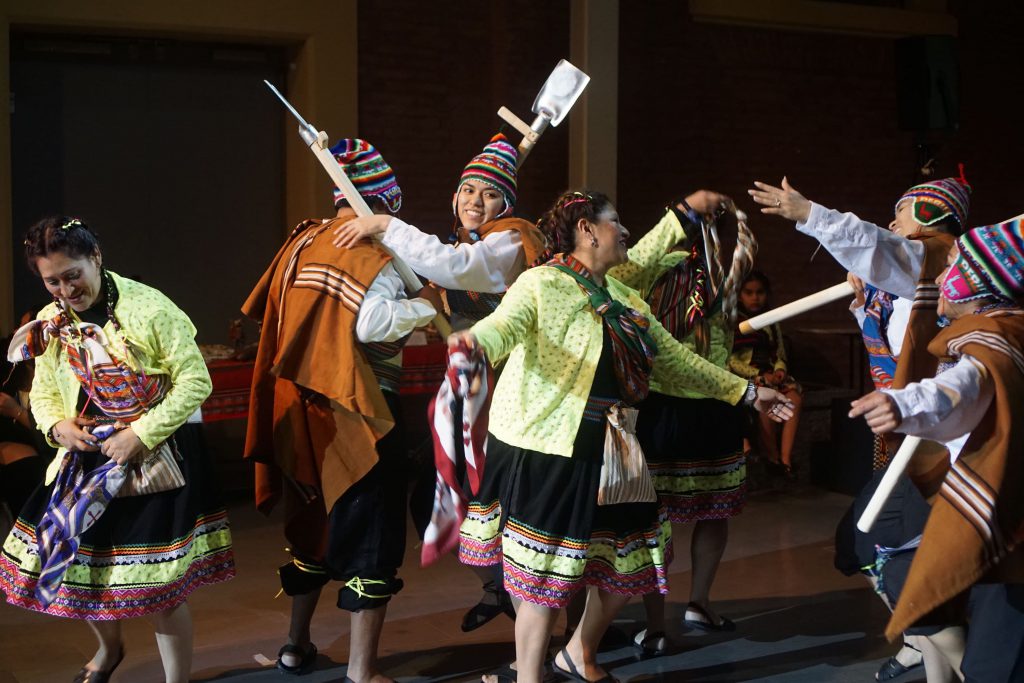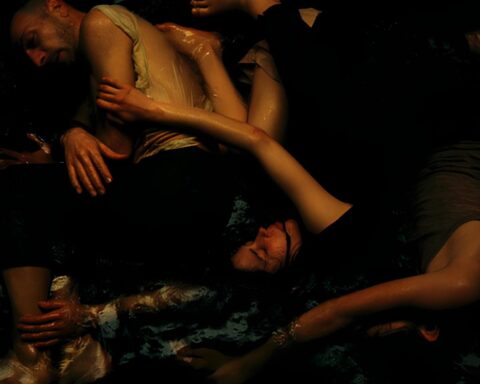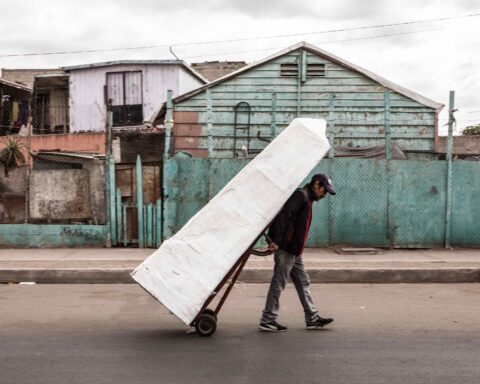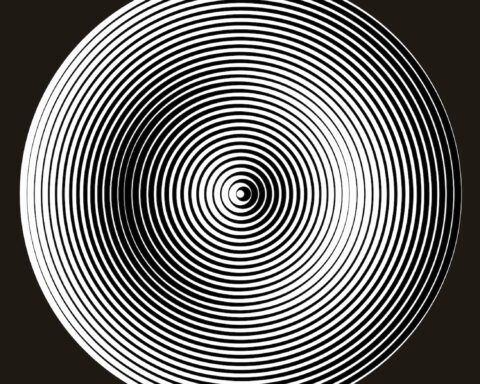The last edition of Atlas of Transitions Biennale – HOME, the international arts festival organized by Emilia Romagna Teatro Fondazione in Bologna, returned from 1st to 10th March 2019 with a full schedule of events. Questioning the theme of migration through the wide spectrum of the notion of “home”, the festival, curated by Piersandra Di Matteo, included the participation of Cuban artist and activist Tania Bruguera that presented two important projects: Referendum, a ten days urban performance that activated a referendum campaign addressed to the citizens of Bologna, and School of Integration, a temporary educational institution in which, each day, lectures were dedicated to the culture of a different country. Tania Bruguera (Havana, 1968) lives and works between New York and Havana. She has participated in numerous international exhibitions at various prestigious institutions, including Documenta 11, the 53rd Venice Biennale, the Museum of Modern Art and the Bronx Museum of the Arts and, most recently, the Tate Modern in London. Bruguera’s work deals with global concerns such as power, immigration, censorship, repression, analyzing the effects that they have on individuals and the most vulnerable communities.

Ginevra Ludovici: In this edition of Atlas of Transitions Biennale you participated with two special projects: Referendum and School of Integration.
In Referendum, the citizens of Bologna were invited to reply to the question: “The borders kill. Should we abolish borders?”. It is clearly a warm theme in the actual Italian political context. What was the decision-making process in the formulation of this specific question?
Tania Bruguera: In Referendum the idea is to use the same platform that politicians use but without the political pressure, because sometimes when people are voting, they do not really choose their ideal candidates. In this case, people are asked to vote for themselves, without legal consequences, since they are not discussing a new law, they are just invited to be honest with themselves. We have been surprised in the other places in which the performance took place to observe that the differences in terms of number of votes were not so distant. Like for example in New York, where we expected the city to be open and welcoming towards immigrants, but the referendum campaign showed very close results, mirroring the feelings of the collectivity. For the creation of this event, I decided to appropriate some strategies and resources employed in politics, focusing on the specific context of the city of Bologna. The question I always try to answer, in such cases, is: “How is it going to fit in the place?”. I believe it is hard to bring something generic and impose it to people who are maybe in another political discussion.
To choose the right question to propose to the city of Bologna, Piersandra Di Matteo, the curator of the festival, organized discussion groups through a public call, to which numerous participating actors in the urban context responded, such as groups of activists, associations, realities that work in the field of hospitality for refugees, migrants and interested citizens.
There were three extremely participated, rich and lively city assemblies, in which an attempt was made to formulate an inclusive question, open to all, but at the same time positioned. The statement “borders kill” is a clear stance, which however leaves the various subjects free to place themselves individually with respect to a question that speaks not only of geopolitical, but also of existential and emotional boundaries. The initial question was “should we abolish our borders?”; then it was decided in the assemblies to eliminate that “our”, which already implied a “them” and, therefore, a separative attitude. On the other hand, we wanted to save the “we” precisely to indicate that we are subjectively and collectively summoned to answer this question.

Referendum, Urban Performance Atlas of Transitions Biennale Via dell’Abbadia, Bologna, 2019 Courtesy CHEAP street poster art Site-specific installation Photograph by Michele Lapini
G.L. As you were mentioning above, this project, before being presented in Bologna, was also carried out in other cities, including San Francisco, New York and Toronto. What does it mean to reenact the same performance in different times and scenarios? Which kind of themes emerge in this operation?
T.B. In terms of performance, I am a great defender of the importance of updating works, because political, emotional and social contexts change over time. It is very difficult to update something that happened, for example, in the seventies. Some issues, which could then shake public opinion, have now become normal. Therefore it is important, in my work, to try to update the pieces with new sensibilities; however I realized that when we talk about immigration the debate is always at the same point. Unfortunately, after 13-18 years, we can still ask ourselves the same questions because the situation has not changed. This aspect is what is shown in this project, you can propose it again over time and get the same kind of reaction.
G.L. I find your position on the reenactment of a performance very interesting, especially because it is a recurring theme in your work. I am thinking about #YoTambienExijo, for example, which consisted in the reenactment of Tatlin’s Whisper #6, a work originally shown in 2009 within the context of Havana Biennale.
T.B. In this case also the performance changed a lot in each of the cities where it was presented. For me it was no longer interesting to present Tatlin’s Whisper #6 – a work in which each participant was given the opportunity to take the microphone in his hand and talk freely for one minute – inside an institution because reality had become more intense than the work itself.
I think it is important to make art that is more intense than reality, as reality inevitably changes and the work gradually loses strength, risking to become only a bad copy of it. In this sense, #YoTambienExijo is for me an update of Tatlin’s Whisper #6.

(Borders kill)
Referendum.
Urban Performance, Atlas of Transitions Biennale
Via Ercolani, Bologna, 2019 Courtesy CHEAP street poster art Site-specific installation Photograph by Michele Lapini

(Should we abolish borders?)
Referendum.
Urban Performance, Atlas of Transitions Biennale
Via Ercolani, Bologna, 2019 Courtesy CHEAP street poster art Site-specific installation Photograph by Michele Lapini
G.L. These works can be seen as articulations of the notion of Arte Útil (Useful Art), which envisages the use of art as a tool or device for the activation of sustainable models aimed at social change. Where did your approach come from?
T.B. As an artist, I am very interested in the function of art. I believe that many of the questions concerning art have already been answered in various movements of the past, while, at the present time, for me the fundamental questions are: what is art for? what is its function? why do we need it? By this I do not mean that we do not need it, on the contrary, I think it is important to understand the reasons why we make art. Art Útil, deviating profoundly from a purely neoliberal approach, does not intend to find solutions to certain problems. Its purpose is to find possible ways to function within society.
The idea was born, first of all, from my personal experience: I grew up in a historical moment in which people still firmly believed in the Cuban Revolution, even if it was an utopia. There was a climate of extreme trust and hope in the future, when perhaps there were not even the conditions for such enthusiasm. This idea also derives from the discomfort I felt when I started working and exhibiting in the West: I experienced a moment of crisis because my work was not commercial, I felt a strong contradiction inside myself because I perceived that the function of art was assigned in a completely conventional and predetermined way, while my research dealt with social and political issues.
The current situation is very different from that of twenty years ago, when we lived in the welfare bubble. Now, the context has become so dramatic that it has triggered a series of attitudes towards a political art.
I thought I had invented the concept of Arte Útil, but it is not true. I have discovered over the years that an Argentine intellectual, Eduardo Costa, has written a manifesto on useful art in 1969 and that even the Italian artist Pino Poggi created one in 1965.
Recently we found mention of it in a text by the Mexican architect Juan O’Gorman, which dates back to 1933. The fact that several individuals discussed it over time means that it is a recurring problem that is still unresolved: this gives even more strength and relevance to this concept. Regarding Pino Poggi, I find myself very much in line with his very lucid theoretical formulations but I noticed that, in terms of practice, his work was very different from his writings. However, I do not find this aspect strange at all because the language of art develops slower than ideas. It also happened to me in the case of the School of Integration; I started to think about this project in 2005, but I decided not to start it at that time because I was feeling that it was not the right time for it.

Atlas of Transitions Biennale, Bologna, 2019 Credits Enrico De Stavola
G.L. Regarding the School of Integration: in this case you proposed the institution of a temporary school based on the models of schools of integration for newly arrived migrants, but changing its perspectives, since the lectures were conducted by members of communities of foreigners living in Bologna. Your artistic practice has dealt previously with the creation of new institutions aimed not at representing, but presenting concrete alternatives to the preexisting institutions (e.g. Cátedra Arte de Conducta). Here, the new institutions lasted for the very specific temporality of ten days. How do you think or wish that this artistic project will impact on the urban reality of the city?
T.B. Integration schools, commonly and formally understood, have more to do with cultural assimilation than with actual integration. Art has a limitation based on how much it is really possible to do at an institutional level. Instead of getting angry with the institutions, my reaction is to build new options through a kind of constructive criticism, in the hope that those in charge will reflect and try to incorporate the work into their own practice, or simply trigger a discussion. The work lasts only ten days because art can work as an example. A possible positive consequence of this project would be to further strengthen the links between the different realities active in the city context.
G.L. It has been a full year: the Turbine Hall project at Tate Modern has ended at the end of February, and you have just participated in the Atlas of Transitions Biennale. What will be on your agenda in the imminent future?
T.B. We will present the School of Integration again this summer at the Manchester International Festival, after this premiere in Bologna. In the meantime, I am working against Decree 349; it’s a big battle. I want to clarify that we do not want to boycott the Havana Biennial, we want people to be in solidarity, although I believe it will be difficult, since we have already tried to contact some artists who have responded that this is not their problem. Instead, it is their problem, it is everyone’s problem, because the world is now interconnected. We have just learned that Uganda has created a similar decree to control artists. I believe, unfortunately, that this phenomenon will expand if people do not position themselves against injustice. Furthermore, I am working on another project which I hope will go into effect and which consists in proposing an undocumented immigrant as a candidate for the United States presidency.










